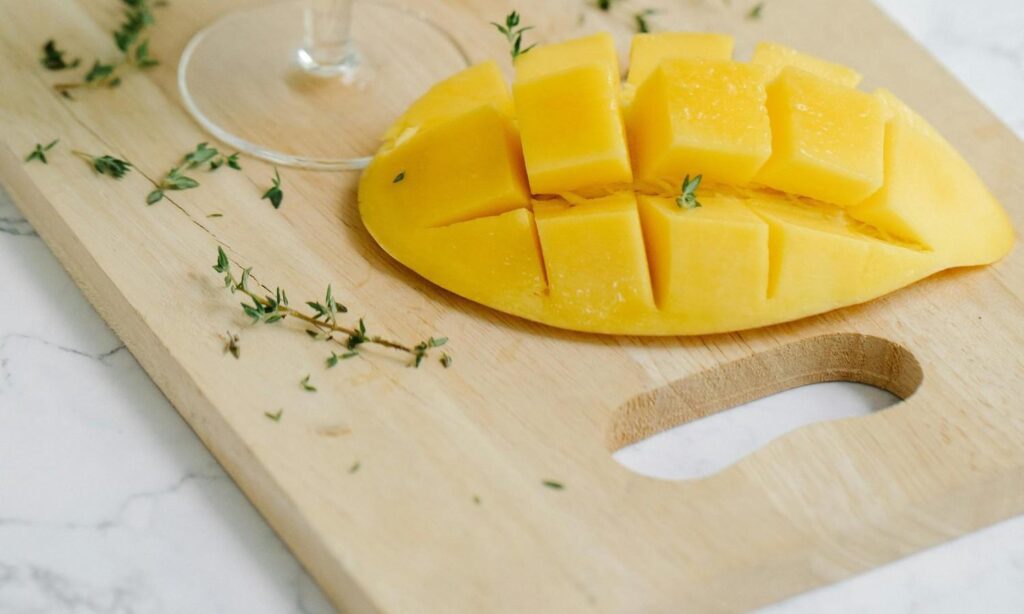Picture a sun-drenched market in Mumbai, where vendors shout over each other, their tables overflowing with golden Alphonso mangoes, each one glowing like a tiny sun. The air is thick with their sweet, heady aroma—a scent so intoxicating it could make you forget the world for a moment. Now, fast-forward to a grocery store in New Jersey, where a small pile of Tommy Atkins mangoes sits quietly under fluorescent lights, looking a bit… uninspired. For mango lovers in the U.S., this contrast is more than a scene change—it’s a call to action. National Mango Day, celebrated every July 22, isn’t just about savoring this tropical treasure; it’s a reminder of how much more the U.S. could enjoy if we embraced the vibrant world of imported mango varieties. So why are American mango enthusiasts clamoring for more? Let’s dive into the juicy details.
The Mango Obsession: A Fruit Worth Celebrating
Mangoes aren’t just fruit—they’re a cultural phenomenon. In India, where the mango is dubbed the “king of fruits,” ancient poets like Amir Khusrau called it the “fairest fruit of Hindustan.” Across South Asia, mangoes are woven into traditions, from religious ceremonies to wedding decorations, their leaves adorning doorways for good luck. In the U.S., mangoes are newer to the scene, but their popularity is skyrocketing. In 2022, Americans consumed about 3.76 pounds of fresh mangoes per capita, a number that’s been climbing steadily. National Mango Day, marked by festivals, recipes, and social media buzz, channels this growing love. But there’s a catch: while the U.S. imports a staggering 573,792 metric tons of mangoes annually, mostly from Mexico, the variety available is surprisingly limited.
Why does this matter? Because mangoes aren’t one-size-fits-all. With over 1,000 varieties worldwide, each offers a unique flavor, texture, and story. Yet, American supermarkets are dominated by just a handful—Tommy Atkins, Ataulfo, Kent, and a few others. Mango lovers are starting to notice, and they’re hungry for more.
The U.S. Mango Market: A Tale of Limited Choices
Walk into any U.S. grocery store, and you’ll likely spot Tommy Atkins mangoes, with their reddish blush and sturdy flesh. They’re the workhorse of the mango world—reliable for shipping but often lackluster in flavor compared to their global cousins. According to the National Mango Board, only six main varieties are commonly found in the U.S.: Tommy Atkins, Ataulfo (Honey), Kent, Keitt, Haden, and Francis. These are delicious in their own right, but they’re just a sliver of what’s out there.
- Tommy Atkins: The most common, with a firm texture but less intense flavor. Available nearly year-round.
- Ataulfo (Honey): Sweet and creamy, with a peachy undertone, peaking from March to July.
- Kent: Soft and juicy, with a tropical sweetness, available March to July.
- Keitt: Large and green when ripe, with mild sweetness, available late summer.
- Haden: Bright and firm, popular in Florida, with a hearty texture.
- Francis: Flat and sweet, hailing from Haiti, with golden flesh.
These varieties, mostly from Mexico, Peru, Ecuador, Brazil, and Guatemala, make up the bulk of the 65.5% market share held by Mexican imports alone. But mango aficionados are craving the exotic profiles of varieties like India’s Alphonso, Kesar, or Dasheri, which offer richer aromas and creamier textures. So why are we stuck with so few options?
The Challenges of Importing Mangoes to the U.S.
Bringing mangoes from far-flung corners of the world to American shelves isn’t as simple as loading them onto a plane. The journey is fraught with logistical, regulatory, and economic hurdles.
Phytosanitary Restrictions
Until 2006, Indian mangoes were banned in the U.S. due to concerns about invasive pests. When President George W. Bush lifted the ban to boost trade, it came with strict conditions: mangoes had to be irradiated to eliminate pests, a process requiring specialized facilities. India has since built a robust export infrastructure, but other mango-growing nations like Pakistan and Bangladesh lag behind, making their varieties harder to access.
Shipping and Spoilage
Mangoes are delicate. A single bruise or delay can turn a perfect fruit into a mushy mess. Indian mangoes, for instance, are often shipped by air freight to maintain freshness, driving up costs to $30–$50 per box (about $8 per mango). Mexican mangoes, by contrast, are trucked across the border, keeping prices as low as $10 per box. Proximity gives Mexico a massive advantage, but it also limits variety.
Market Dynamics
Large retailers like Costco often reject Indian mangoes due to their high price and short shelf life compared to Mexican varieties. Indian grocery stores in the U.S., particularly in places like New Jersey with large Indian diaspora communities, are more willing to stock premium varieties like Alphonso, but even they face challenges. Stores often pit importers against each other to drive down prices, and customers can return entire boxes if even one mango is spoiled—a policy that doesn’t apply to other produce.
Climate and Production Issues
Climate change is another hurdle. In 2023, Peru’s mango production was slashed by El Niño’s warm temperatures, leading to a 73% drop in exports to the U.S. compared to the previous year. Mexico, too, faced a 5.33% drop in exports in 2024 due to drought and USDA restrictions, including a ban on Sunday packing operations. These fluctuations make it harder to diversify supply chains.
Why Mango Lovers Want More
For many, mangoes are more than fruit—they’re nostalgia. Apoorva Reed, a software engineer in New Jersey, spends $300–$400 at a time on Dasheri mangoes, which remind him of his grandparents’ orchard in northern India. “I don’t even look at the prices,” he says. Kaushal Khakkar, who runs Kay Bee Exports in Mumbai, puts it perfectly: “It is not a rational purchase. The mangoes are available from other countries at a fraction of the price, but people get reminded of their childhood memories.”
This emotional pull is driving demand for imported varieties, especially from India, which produces 26.3 million tons of mangoes annually—nearly half the global supply. Here are some varieties U.S. mango lovers are begging for:
- Alphonso: Known as the “king of mangoes,” with creamy, saffron-hued flesh and unmatched sweetness.
- Kesar: Bright yellow and juicy, with a GI tag for its quality, grown in Gujarat.
- Dasheri: Fragrant and soft, a northern Indian favorite with a nostalgic pull.
- Totapuri: Tangy and pulpy, ideal for processing but also enjoyed fresh.
- Mallika: A hybrid of Neelum and Dasheri, sweet and vibrant.
These varieties, with their complex flavors and cultural significance, are starting to appear in specialty stores, thanks to a 19% increase in Indian mango exports to the U.S. in 2024. But they’re still hard to find, and mango lovers want easier access.
The Cultural Connection: Mangoes as More Than Food
In the U.S., mangoes are increasingly tied to cultural identity, especially for immigrant communities. For Indian Americans, biting into an Alphonso is like a taste of home. In Haiti, Francis mangoes star in dishes like mango chicken and spicy salsa. Social media amplifies this passion—on National Mango Day, posts on X explode with recipes, photos, and stories. One user shared, “India grows over 1,000 types of mangoes, and after a 2006 trade deal, Alphonso and Kesar finally hit U.S. shores. Which is your fave?”
Mangoes also shine in American kitchens. The National Mango Board offers over 300 recipes, from smoothies to salsas, showcasing the fruit’s versatility. But the limited variety restricts creativity. Imagine a mango lassi made with Kesar or a dessert infused with Mallika’s tropical notes—these are experiences U.S. foodies are missing out on.
The Future of Mango Imports: Opportunities and Challenges
The good news? The U.S. mango market is growing, with imports up 2.5% from 2021 to 2022. Marketing campaigns, like those from the National Mango Board, are boosting awareness, emphasizing mangoes’ health benefits (50% of daily vitamin C in just 3/4 cup!). But to bring more varieties to American tables, several things need to happen:
- Improved Infrastructure: Countries like India and Pakistan need better irradiation facilities and faster shipping methods to compete with Mexico’s proximity.
- Consumer Education: Retailers and consumers need to learn about lesser-known varieties. As Ronnie Cohen of the National Mango Board notes, “There’s a huge opportunity for education and growth.”
- Sustainable Practices: Climate change is a growing threat. Experts like Sergio Roberto Márquez warn that worsening conditions could further disrupt production, especially in Mexico and Peru.
- Policy Changes: Easing phytosanitary restrictions and import tariffs could open the door for countries like Bangladesh and Pakistan.
Retailers are starting to catch on. Some chains are shifting toward Kents and Keitts for their superior flavor, while specialty stores cater to diaspora communities with pricier imports. Platforms like TradeImeX are also helping connect U.S. buyers with global suppliers, making it easier to source varieties like Alphonso.
National Mango Day isn’t just a celebration—it’s a rallying cry for mango lovers to demand more. The U.S. has only scratched the surface of the mango’s potential, with hundreds of varieties waiting to be explored. Will we see Alphonso mangoes in every supermarket one day? Or Kesar smoothies at your local café? The future depends on growers, importers, retailers, and consumers coming together to embrace the full spectrum of this beloved fruit.
So, next time you’re at the grocery store, don’t just grab a Tommy Atkins. Ask about Alphonso, Kesar, or Dasheri. Share a mango recipe on social media. Celebrate National Mango Day by dreaming bigger—because the king of fruits deserves a bigger throne in America. What’s your favorite mango variety, and how do you think we can bring more of the world’s mangoes to U.S. shores?










